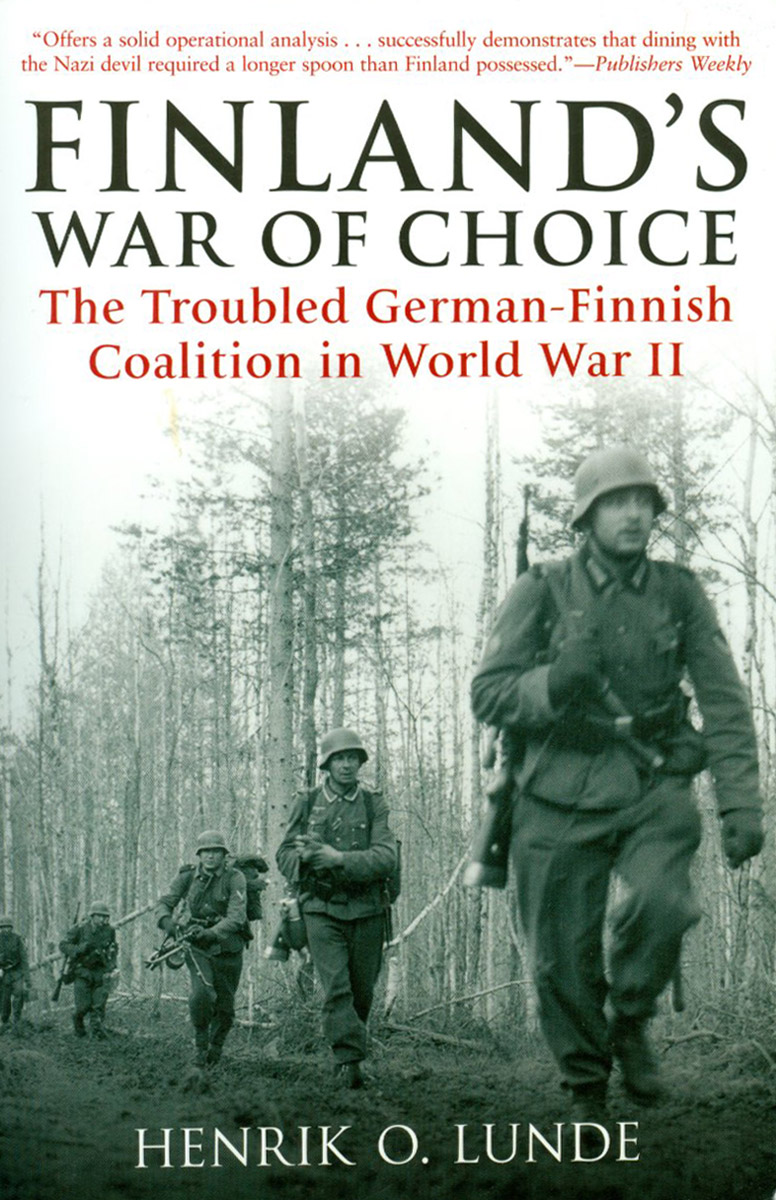Finland’s War of Choice: The Troubled German-Finnish Coalition in World War II
History
Finland was in a very precarious position in the period leading up to the outbreak of World War II. Although a democracy, Finland was surrounded by two gigantic totalitarian states with vicious appetites for territorial expansion. With the Soviet paranoia regarding Nazi Germany’s desires to destroy the communist “workers’ paradise”, and German desires for expansion into Eastern Europe, Finland stood in the way of both countries’ ambitions. In 1939, the Nazis and the Soviets signed a Non-Aggression Pact, which secretly divided up Eastern Europe into “Spheres of Influence” for each country. The Soviets quickly swallowed up the Baltic republics, and later, in 1939, the Soviets attacked Finland in order to gain Finnish territory they felt was essential for the defense of Leningrad. The small highly trained and motivated Finnish Army gave the much larger Soviet military a serious bloody nose, and although the Finns eventually had to agree to an armistice in 1940, ceding some territory to the Russians, they survived intact, and were not subjected to Soviet control. One factor that became important was that the Germans felt that the Soviet military was not as strong as previously thought, and this led Nazi war planners, including Hitler, to believe that the Soviets could be easily defeated with an invasion involving “Blitzkrieg” tactics. The Soviets, however, learned their lesson, and made improvements that cost the Germans dearly.
The Finns felt that if they cooperated with the Nazis in their Operation Barbarossa. They could regain the territory lost in 1940. The Germans, on the other hand, felt that Soviet strength would be diverted by an invasion by Finland, and sent some units to help the Finns secure their northern flank, as well as help out in the movement towards Leningrad and Murmansk. There was some consultation between the Germans and the Finns, but never an agreement on specific strategies. In addition, the Swedes were sympathetic to Finland’s situation, and actually sent volunteers to assist. The United States retained diplomatic recognition of Finland until later in the war, and the Finns wanted to retain American friendship as long as possible, which helped to keep the Finns from providing more help to the Germans.
It was, indeed, a confusing situation, and somehow, in the end, the Finns were able to salvage their independence by agreeing to an armistice with the Soviets in 1944, promising to expel the Germans from their territory. The Germans were able to withdraw most of their forces into Norway and Eastern Europe, and Finland was left to pick up the pieces and repair the damage caused by the fighting and the Russian bombing.
The Book
The author of this book, Col. Henrik O. Lunde, U.S. Army (ret.) has written several books on related subjects, and although not proficient in Finnish (who is?), he has had access to numerous accounts and documents from Finland, Germany, and Russia, and he has managed to put together an excellent and readable account of the confusing and sometimes contradictory actions and policies used by the combatants, which resulted in the retention of independence by Finland, especially in the war’s aftermath, when trials were held by the winners to determine the “war guilt” of various individuals. (History is, of course, a written record of the past, as compiled by the winners.) The story is fascinating, and reads like an exciting spy novel, and I had trouble putting it down after I got into it. Particularly interesting was the discussion of the communication between various Finnish, Germans, and Russian leaders, and how their views and interpretations of the situations differed. Many of the texts are quoted directly, and serve to explain why things happened the way they did. The author weaves them together into a fascinating story, and I learned a lot from reading this book, and that, I think, is the point. The author deals mainly with the ground war, with little mention of either the Finnish Air Force or the Luftwaffe, but their roles were insignificant compared with the ground war. This is a book dealing much more about the interactions of people, with very little information on the technology of the period.
Recommendation
This was a fascinating book, and even for a non-historian, will serve to enlighten the reader about an era of history that can be very confusing. It describes people realistically, and does not create a “good guy-bad guy” situation, although this is quite an achievement, considering some of the people involved, especially on the Soviet and German sides. This is definitely a “must-read” for anyone interested in World War II in Europe. Don’t miss out on it, as it is very reasonably priced, and well produced. Highly recommended.
Thanks to Casemate Publishing Company and IPMS USA for the chance to review this excellent book.
Editors note: this book is available in several eBook formats and a sample of the book is available as a PDF file on the publishers website.




Comments
Add new comment
This site is protected by reCAPTCHA and the Google Privacy Policy and Terms of Service apply.
Similar Reviews